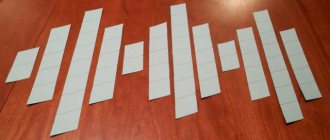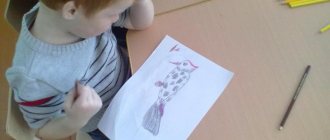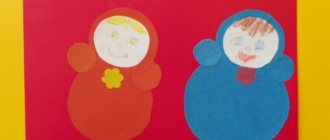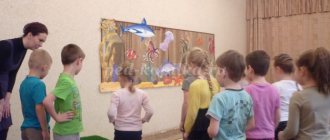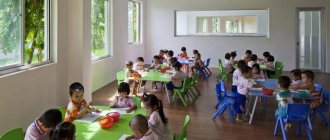Expected results
By the end of the year, the child should be able to:
- Name the main parts of the Lego constructor (purpose, features);
- Know the simplest fundamentals of mechanics (stability of structures, strength of connections);
- Distinguish between types of structures: flat, volumetric, fixed and movable connection of parts;
- Adhere to the technological sequence for manufacturing simple structures.
- Be able to select the parts necessary for design (by type and color);
- Be able to design, focusing on a step-by-step design manufacturing scheme;
- Design according to a sample;
- With the help of a teacher, analyze, plan upcoming practical work, and monitor the quality of the results of one’s own practical activities; independently determine the number of parts in the design of models;
- Realize a creative idea.
- Educational and methodological plan of the additional program.
Number of school weeks per year – 34
Number of training sessions – 34
LEGO - construction is carried out in the afternoon in a group room for the senior group, 1 time per week. Lesson duration is 25 minutes.
A LEGO construction lesson begins with a set of finger gymnastics. During the lesson there is a physical exercise corresponding to the topic of the lesson.
When organizing constructive-model activities for preschool children, you can use frontal, individual and subgroup forms.
Teaching preschoolers Lego construction can be divided into several stages:
| Chapter | Dates | Section Contents | Subject | Number of hours | ||
| theory | practice | Total | ||||
| 1 | September | Familiarity with the types of LEGO construction sets, its elements, as well as methods of attaching parts. | Introduction to LEGO elements. Game activity with a constructor. | 1 | 1 | 2 |
| Fastening LEGO parts. Built according to plan | 1 | 1 | 2 | |||
| Total: | 2 | 2 | 4 | |||
| 2 | October December | Learn to read diagrams, build a building according to a model (when there is a ready-made model of what needs to be built, for example, an image or diagram) | Learning to read a diagram. | 1 | 1 | |
| We construct a three-dimensional house with a fence | 2 | 2 | ||||
| We design furniture: sofa, bed | 1 | 1 | ||||
| We design furniture: table, chair, cabinet with doors | 1 | 1 | ||||
| We are building a city. Playing off buildings. | 2 | 2 | ||||
| We model domestic animals according to the scheme: cat, dog, horse | 1 | 1 | ||||
| Construction of pens for animals. Playing off buildings. Exhibition of works | 1 | 1 | ||||
| Construction according to plan. | 1 | 1 | ||||
| Modeling a Christmas tree (according to the diagram) | 1 | 1 | ||||
| Modeling a New Year's toy (based on a sample to choose from) Exhibition of works | 1 | 1 | ||||
| Total: | 1 | 11 | 12 | |||
| 3 | January February | Teach children to create a building according to conditions (there is no sample, only the conditions that the building must meet are given) | Free play activity for children. We learn to design according to conditions. | 1 | 1 | |
| Design of a human figure. Man | 1 | 1 | ||||
| Design of a human figure. Woman | 1 | 1 | ||||
| We design fairy tale characters | 1 | 1 | ||||
| Truck design | 1 | 1 | ||||
| We are building a garage for cars. Playing off buildings. Exhibition of works | 1 | 1 | ||||
| Total: | 6 | 6 | ||||
| 4 | March, April | Teach children to build a building according to plan (the child himself, without any external restrictions, creates an image of the future structure and embodies it in the material that is at his disposal) | Learning to design by design | 1 | 1 | 2 |
| Gift for mom: flower. | 1 | 1 | ||||
| Modeling by design. Exhibition of works | 1 | 1 | ||||
| Boat construction | 1 | 1 | ||||
| Rocket construction | 1 | 1 | ||||
| Aircraft design | 1 | 1 | ||||
| Construction of a passenger car. Exhibition of works | 1 | 1 | ||||
| Total: | 1 | 7 | 8 | |||
| 5 | May | Final exhibitions, diagnostics, open classes for parents. | Free play activity for children. Educational games using a constructor | 1 | 1 | |
| Construction “My favorite kindergarten” (collective) Playing off buildings. | 1 | 1 | ||||
| Open lesson for parents “Journey to Lego Country” | 1 | 1 | ||||
| Design according to children's ideas (diagnostics) Final exhibition | 1 | 1 | ||||
| Total: | 4 | 4 | ||||
| Total: | 4 | 30 | 34 | |||
- Program content
| No. | Subject | Content | Number of hours |
| 1 | Introduction to LEGO elements. (theoretical part) | Introduction to the main parts: beam, plate, corner plate, brick, gear, axle, belt, pin. Consolidating new knowledge in a playful way. | 1 |
| 2 | Game activity with a constructor. Game “Find the same detail as in the picture.” (practical part) | Free play activity of children, during the game the details of the designer are named, assumptions about where they can be used. D/i “Find the same part as in the picture” - consolidation of knowledge about LEGO parts. Finger gymnastics “RAIN” | 1 |
| 3 | Fastening LEGO parts. (theoretical part) | Introducing children to various types of fasteners in Lego construction through illustrations and slide demonstrations. Visual demonstration by the teacher | 1 |
| 4 | Construction according to plan using various types of fastenings. (practical part) | Consolidating knowledge gained in previous classes in productive activities. Finger gymnastics “FISH” The game “Wonderful Bag” is a repetition of the names of the main parts of the construction set. Demonstration of models with different types of fasteners. Group work of children (3-4 people each) Playing with buildings together. | 1 |
| 5 | Learning to read a diagram. (theoretical part) | Introducing children to the construction scheme. Showing various diagrams and drawings. Clarification of which parts are used in a particular scheme, what types of fasteners are present. Comparison of the finished building (flat house) with the diagram. Individual work of children to reproduce a flat house according to the proposed scheme, with the help of a teacher. | 1 |
| 6-7 | We construct a three-dimensional house with a fence | Continue working with children on using diagrams and building a model based on the model. Finger gymnastics “HOUSE” Examination of the diagram - illustration “Volume house with a fence” - helps children decide on the choice of parts for construction (types of parts and in what quantities). Group work of children to build a house Playing off the building. | 2 |
| 8 | We design furniture: sofa, bed | Teach children to design household items based on patterns. Demonstration of product diagrams (sofa, bed) and finished buildings for selecting parts. Finger gymnastics “HOME” Individual work for children (teacher assistance) The use of buildings in role-playing games. | 1 |
| 9 | We design furniture: table, chair, cabinet with doors | Continue to teach children how to design household items based on patterns. Demonstration of product diagrams (table, chair, cabinet with doors) and finished buildings for selecting parts. Finger gymnastics “HOME” Individual work for children (teacher assistance) The use of buildings in role-playing games. | 1 |
| 10 — 11 | We are building a city. Playing off buildings. | Development of the ability to analyze, highlighting the characteristic features of an object, functional parts; establish a connection between their purpose and structure; continue to learn how to navigate space correctly and quickly. Strengthening the ability to work in a team. Presenting a problem situation to children. Examination of illustrations depicting various types of buildings (multi-storey building, hut, theater building, store, hospital, etc.). Decide on buildings (what buildings we will construct, what parts are needed for this) Finger gymnastics “MY CITY” Collective work of children (teacher help) Playing off the building. | 2 |
| 12 | We model domestic animals according to the scheme: cat, dog, horse | Clarifying and expanding children's ideas about pets and their appearance. Conversation “What pets do you know?” Demonstration of animal figurines, their design schemes, finished samples. Determining the parts needed for their manufacture. Finger gymnastics “BURENUSHKA” Group work of children according to schemes (3 groups of 4 people) | 1 |
| 13 | Construction of pens for animals. Playing off buildings. Exhibition of works | Continue to clarify and expand children’s ideas about pets, their appearance, and lifestyle. Conversation “Where Do Pets Live” Examination of illustrations showing stalls and pens for animals. Familiarization with the construction scheme, determination of the type and number of parts. Finger gymnastics “Pets” Collective construction of a pen for animals according to the model. Playing off the building. | 1 |
| 14 | Construction according to plan. | Forming in children a sustainable interest in constructive activities, a desire to experiment, create, and invent. Finger gymnastics “FISH” Group or individual work of children (optional), teacher assistance in choosing details. | 1 |
| 15 | Modeling a Christmas tree (according to the diagram) | Development of fantasy and imagination, the ability to convey the shape of an object using a constructor; consolidation of fastening skills. Riddle about the Christmas tree. Consider various illustrations depicting a Christmas tree, identify the main characteristics of a tree (green, pyramidal, etc.). Carefully consider the Christmas tree modeling diagram and decide on the choice of parts. Finger gymnastics “New Year” Individual work for children (teacher assistance) Organization of a mini-exhibition. | 1 |
| 16 | Modeling a New Year's toy (based on a sample to choose from) Exhibition of works | Development of fantasy and imagination, the ability to convey the shape of an object using a constructor; consolidation of fastening skills. Conversation “What is New Year” Demonstration of slides depicting the New Year holidays. Demonstration of modeling schemes for various New Year's toys. Helping children choose toys for modeling. Finger gymnastics “On the Christmas tree” Individual work for children (teacher assistance as needed) Exhibition of children's works. | 1 |
| 17 | Free play activity for children. We learn to design according to conditions. | Teach children how to build a building according to conditions (there is no model, only the conditions that the building must meet are given). Conversation “How to build a model according to the conditions” Game “Depict an animal according to given conditions” Making a model of a car according to the conditions (passenger car, red) together with a demonstration by the teacher. Playing off the building. | 1 |
| 18 | Construction of a house according to given parameters: two windows, porch, high roof. | Continue to teach children how to build a building according to the conditions. Game “Depict an animal according to given conditions” Setting up a problem situation for children (Building a house according to given parameters: two windows, a porch, a high roof) Determination of the type and quantity of parts. Finger gymnastics “Home” Group work of children (4 people each) Mini-exhibition | 1 |
| 19 | Design of a human figure. | Introducing the concept of balance, symmetry, expanding vocabulary. A riddle about a man. Look at illustrations depicting people, clarify what main parts of the body a person has (head, torso, arms, legs) Teacher showing how to make a human figure Finger gymnastics “My Family” Individual work for children (teacher assistance as needed) The use of buildings in role-playing games. | 1 |
| 20 | We design fairy tale characters | To provide children with joy and pleasure from developmental games, teaching them the ability to plan work based on an analysis of the features of the images of fairy-tale characters; mastering the skills of conveying the characteristic features of heroes using construction kits. Riddles about fairy-tale heroes. Examination of illustrations depicting fairy-tale characters. Finger gymnastics “Orange” Individual modeling of fairy-tale characters (children's choice), teacher assistance as needed. | 1 |
| 21 | Truck design | Clarify and expand children's ideas about transport. Truck riddle. Game “We are going, going, going...” Fixing the names of the designer parts necessary to build a car. Finger gymnastics “Transport” Individual work of children in parallel with the demonstration of the teacher. Playing with models. | 1 |
| 22 | We are building a garage for cars. Playing off buildings. Exhibition of works | Continue to clarify and expand children's ideas about transport. Conversation “Where cars live” Examination of illustrations showing parking lots, parking lots, garages. Familiarization with the construction scheme, determination of the type and number of parts. Finger gymnastics “Transport” Collective construction of a garage for cars according to the model. Playing off the building. | 1 |
| 23 | Learning to design by design. (theory) | Forming in children a sustainable interest in constructive activities, a desire to experiment, create, and invent. Game “Guess what’s missing” (children’s crafts made earlier are used) Conversation “What do you like to design most?” (individual answers) Introduce children to the algorithm of construction according to plan (in the form of a mnemonic diagram) | 1 |
| 24 | Learning to design by design. (practice) | Forming in children a sustainable interest in constructive activities, a desire to experiment, create, and invent. Recall the construction algorithm according to plan (in the form of a mnemonic diagram). Decide on the choice of building (individually) Teacher assistance in choosing parts for modeling. Individual work of children. Mini-exhibition and children's stories about their models. | 1 |
| 25 | Gift for mom: flower. | Consolidating skills in building stable and symmetrical models. Conversation "March 8 - Mother's Day" Riddle about flowers Consider the diagrams and a sample flower model. Selection of parts. Finger gymnastics “Flower” Individual work for children (teacher assistance if necessary) | 1 |
| 26 | Modeling by design. Exhibition of works | Forming in children a sustainable interest in constructive activities, a desire to experiment, create, and invent. Game "Wonderful bag" Recall the construction algorithm according to plan (in the form of a mnemonic diagram). Individual work of children. Exhibition of works | 1 |
| 27 | Boat construction from a large Lego constructor | Developing the ability to construct various types of transport from construction kit parts. Riddle about the boat. Illustrations depicting different types of ships. Identify the main parts of the ship (stern, deck, etc.) Decide on the choice of parts for construction from a large construction set. Finger gymnastics “Transport” Collective construction of a ship. Role-playing game “Let’s set sail” | 1 |
| 28 | Rocket construction | Developing the ability to construct various types of transport from construction kit parts. Conversation “April 12 – Cosmonautics Day” View illustrations and slides on the theme of space. Consideration of the rocket construction scheme, selection of parts. Finger gymnastics “Cosmos” Group work of children - building a rocket according to the diagram. The use of buildings in role-playing games. | 1 |
| 29 | Aircraft design | Developing the ability to construct various types of transport from construction kit parts. Making riddles about the plane. P/i "Airplane" Consideration of the aircraft construction scheme Finger gymnastics “Transport” Individual work for children Playing off buildings. | 1 |
| 30 | Construction of a passenger car. Exhibition of works | Developing the ability to construct various types of transport from construction kit parts. A game of attention. "Flies, swims or rides." Recall the construction algorithm according to plan (in the form of a mnemonic diagram). Finger gymnastics “Transport” Individual modeling of a passenger car according to a child's design. Exhibition of works of various types of transport. | 1 |
| 31 | Free play activity for children. Educational games using a constructor | Forming in children a sustainable interest in constructive activities, a desire to experiment, create, and invent. Game “Continue the logical series” Game "What's Missing" Game “Find the building according to the conditions” Free play activity for children. | 1 |
| 32 | Construction “My favorite kindergarten” (collective) Playing off buildings. | Forming in children a sustainable interest in constructive activities, a desire to experiment, create, and invent. Look at the photo of the kindergarten to identify the buildings being modeled. Select parts to model. Finger gymnastics “My group” Collective design. Playing off buildings. | 1 |
| 33 | Open lesson for parents “Journey to Lego Country” | Strengthen children's ability to build according to a model. Develop visual and effective thinking. Raise children to work in a team of peers, helping each other during joint construction. | 1 |
| 34 | Design according to children's ideas (diagnostics) Final exhibition | Monitoring the development of constructive-model activities. | 1 |
- Monitoring the development of constructive model activities
The examination of children is carried out annually from September 1 to 15, and from May 25 to 30.
This monitoring is used exclusively to solve the following educational tasks:
1) individualization of education (including support for a child, building his educational trajectory or professional correction of his developmental characteristics);
2) optimization of work with a group of children.
Basic methods of collecting information about a child
- Systematic observation;
- Preservation of products of children's activities;
- Drawing up an observation map that lists skills and abilities (key competencies);
- Conversations with parents, questionnaires, questionnaires;
- Conversations and interviews with the child using open-ended questions, obtaining answers from the children;
- Children's stories;
- Photos;
The teacher begins by collecting information about the child’s development, his interests, inclinations, hobbies, style of communication and thinking, etc. To obtain a complete and objective assessment of the development and current state of the child, it is necessary to use
- different methods of collecting information;
- various sources of information;
- various situations to repeat the information collection procedure.
Teachers use different methods and techniques for collecting information about the child.
Map of development of constructive modeling activities
| No. | Child's full name | Program content | |||
| creates buildings according to a drawing, diagram, model, according to instructions from an adult, independently selecting parts | highlights the structure of an object and establishes its relationship with the practical purpose of the object | independently finds ways to connect and fasten parts | knows how to formulate a plan and basic planning of his activities | ||
| 1. | |||||
Diagnostic methods: observations, conversations with the child
These tables are the basis for planning individual work with a specific child.
Goals and objectives of the program
The goal of the program is to create optimal conditions for the development of cognitive and creative activity of students through the development of LEGO construction.
Tasks:
- introduce preschoolers to the basic concepts and basic mechanics necessary for LEGO construction.
- contribute to the formation of knowledge about modes of transport and types of buildings;
- promote the formation of knowledge about counting, color, shape, proportion, symmetry, the concept of part and whole;
- create conditions for the development of children’s general cognitive abilities: attention, logical and imaginative thinking, memory, imagination.
- promote the development of fine motor skills and coordination of movements;
- promote the development of children's creative abilities.
- to promote the development of organizational and moral-volitional qualities of the individual: independence, discipline, development of patience and perseverance in achieving goals, etc.
5.1. Methodical:
The following teaching materials are used to implement the program:
- educational and thematic plan;
- methodological literature on Lego construction (list of references);
- resources of information networks on methods of conducting classes and selection of schemes for manufacturing products (list of references);
- summary of an open lesson for parents (Appendix 1)
- step-by-step construction diagrams (Appendix 2)
- illustrations of various buildings (Appendix 2)
- card index of finger games (Appendix 3)
- card index of physical minutes
- poems, riddles on class topics
5.3. Methods and techniques used in classes.
The main form of conducting classes is a game.
To maintain interest in LEGO construction classes, various forms and methods of conducting classes are used.
- conversations from which children learn information about modeling objects;
- work according to a model, - students complete the task in the sequence proposed by the teacher (according to the scheme), using certain skills;
— independent design to consolidate theoretical knowledge and implement your own unforgettable discoveries;
- collective work, where children can work in groups, pairs, all together.
When organizing work, it is necessary to try to combine play, work and learning, which will help ensure the unity of solving cognitive, practical and gaming problems. Game techniques, riddles, counting rhymes, tongue twisters, and thematic questions also help with creative work.

